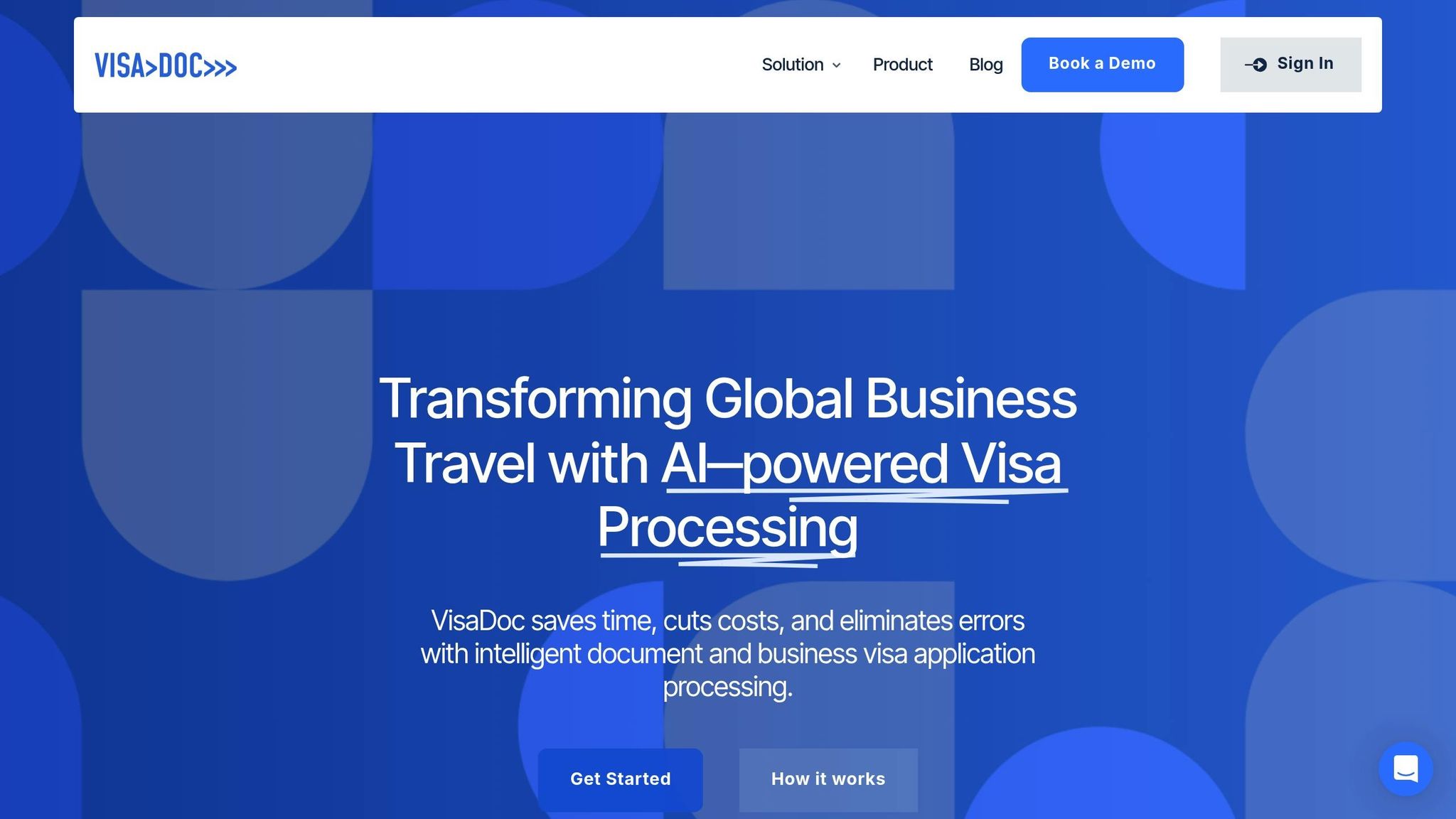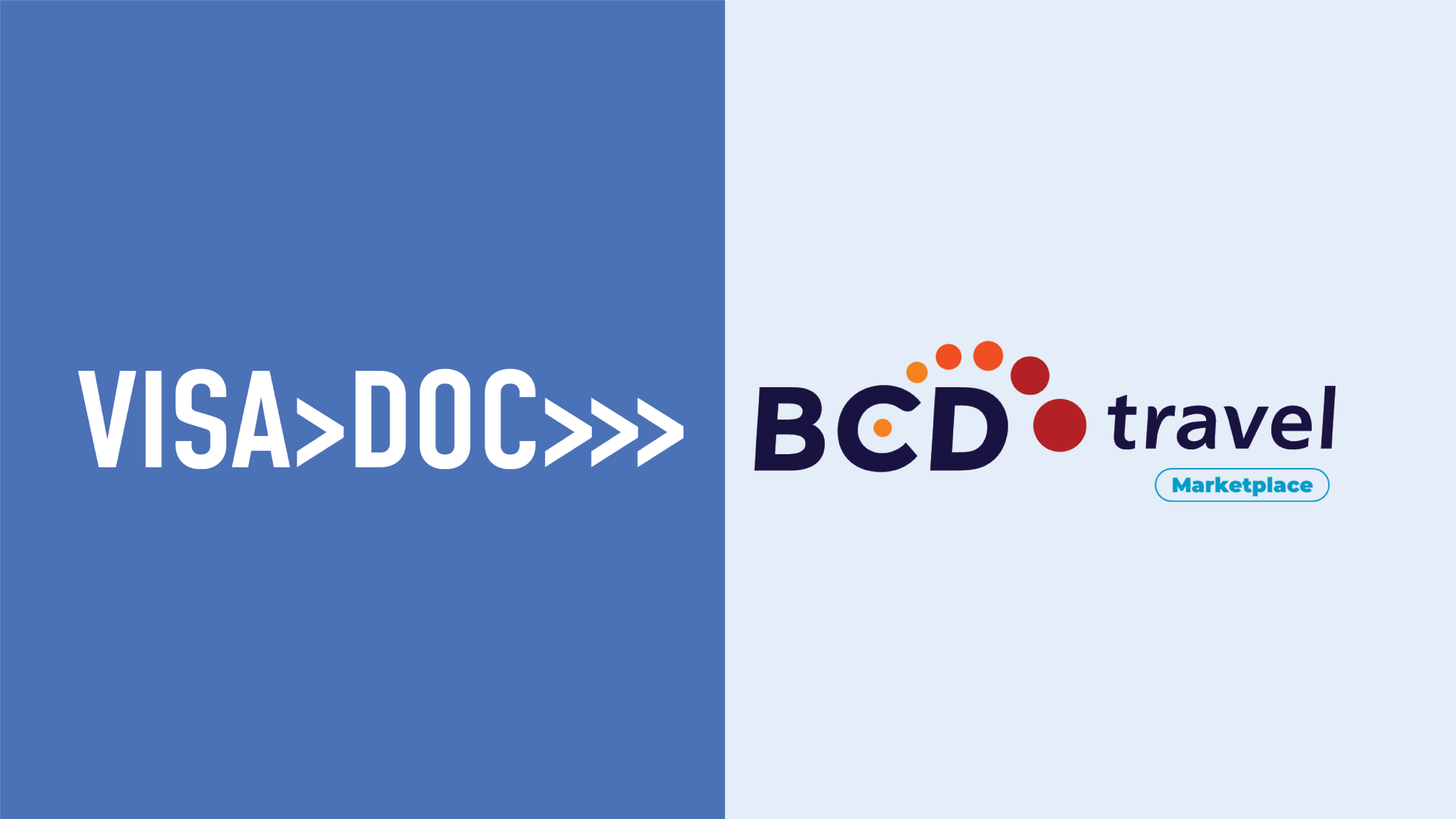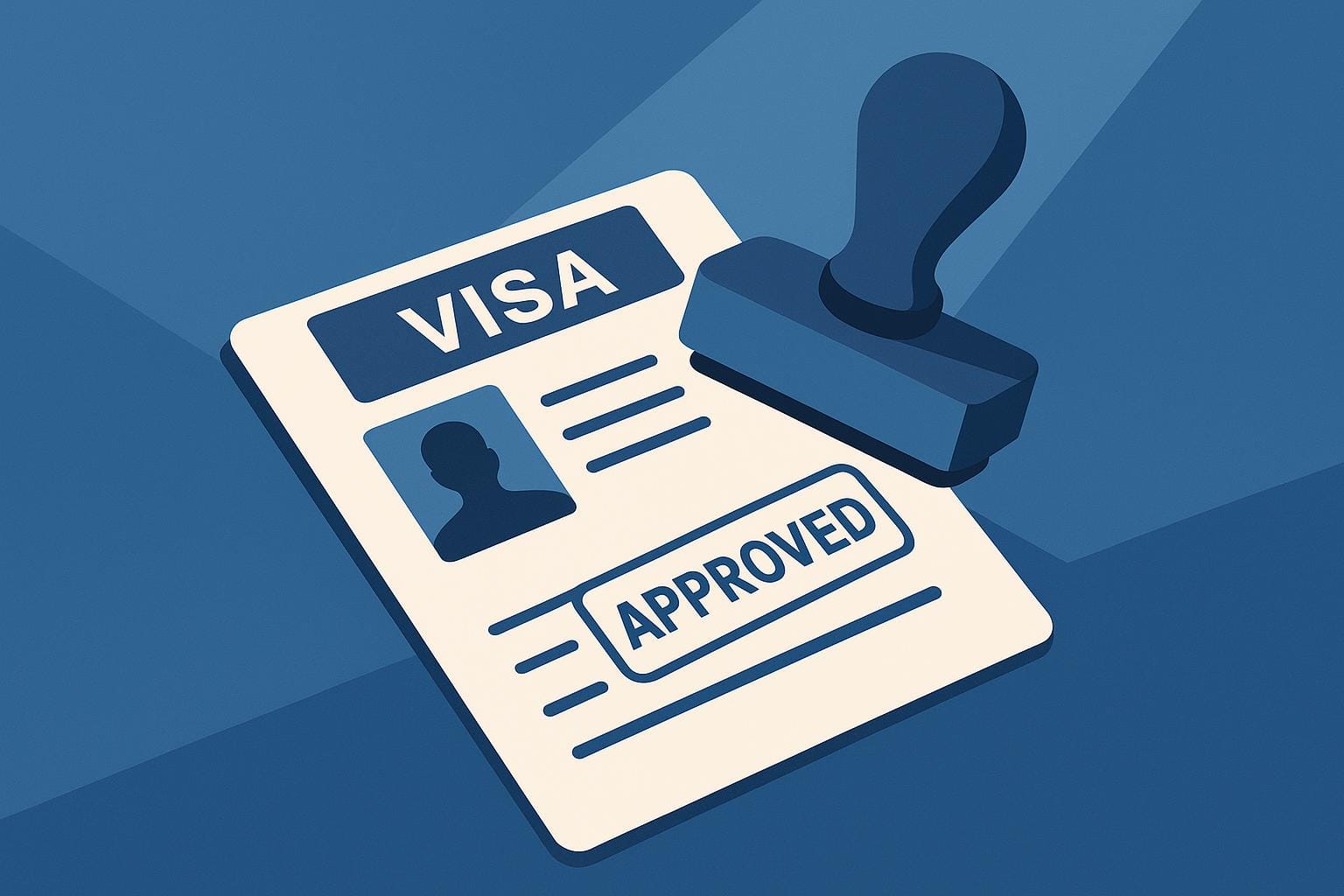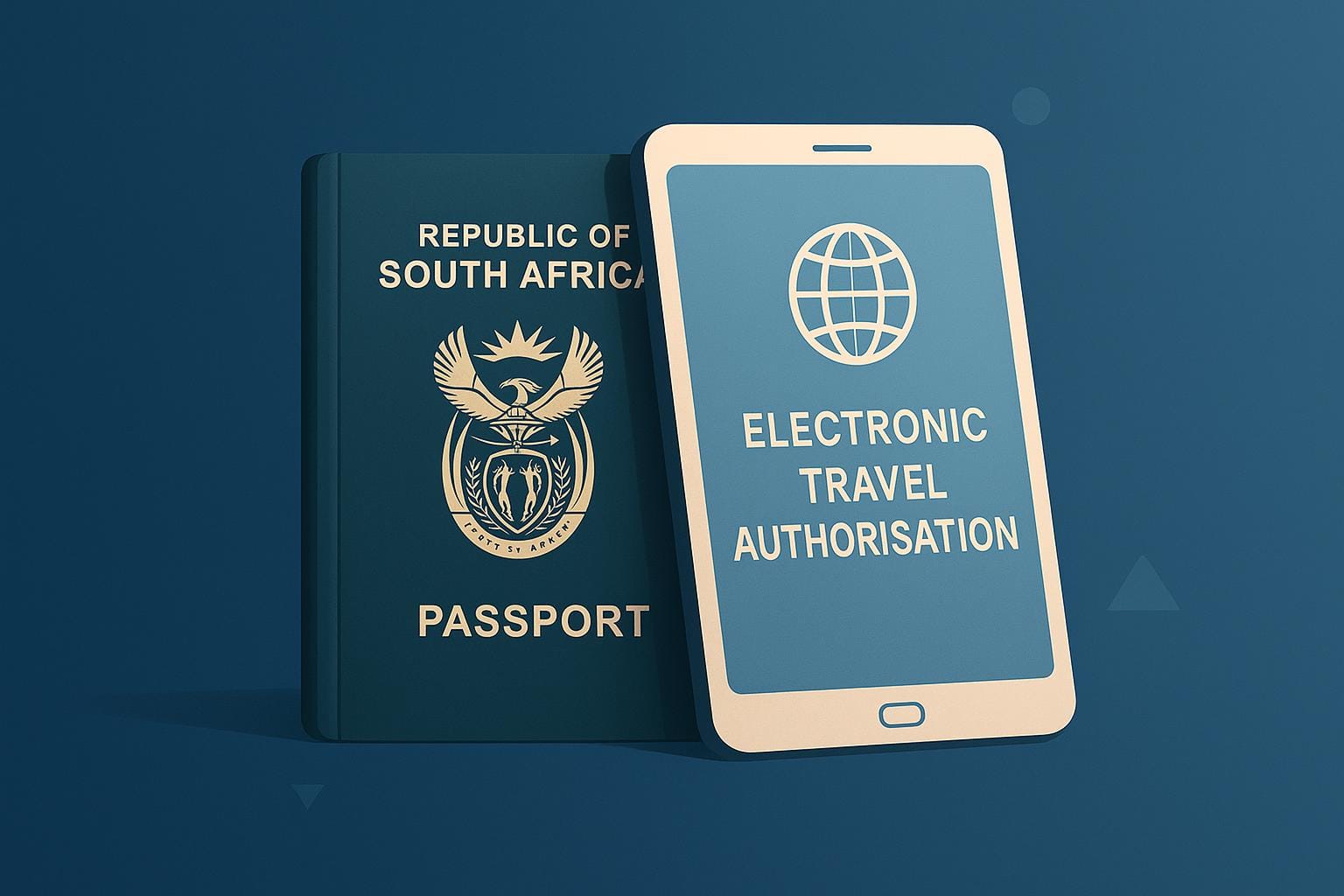Peru's mining sector is a key driver of its economy, contributing 8.5% to GDP and accounting for 63.9% of exports. The country offers vast mineral reserves, including 10.2% of global copper, 3.9% of gold, and 21.8% of silver. To support international business activities like site inspections and feasibility studies, Peru has introduced a Business Visitor Programme with short-term visa options tailored for the mining sector.
Key points include:
- Visa Types: Business Visa (90 days), Tourist Visa (up to 183 days), Designated Worker Visa (technical roles), and Resident Worker Visa (longer-term).
- Eligibility: Valid passport (6 months minimum), employment contracts (for certain visas), and translated documents.
- Costs: Business visa fees start at $25 (£21), with extensions costing $20 (£16).
- Compliance: Activities are restricted to evaluations, meetings, and inspections - direct operations or sales are prohibited.
- Automation Tools: Platforms like VisaDoc simplify visa management for HR teams, reducing errors and delays.
For mining companies, understanding these visa options and adhering to Peru's strict regulations is essential for smooth operations.
Peru's Short-Term Site Assessment Visa Types
Peru provides several visa options tailored for mining site assessments. It's important for UK-based companies planning evaluations in the mining sector to understand these choices.
The Business Visa is the most commonly used option for mining site assessments. This visa allows foreign nationals to enter Peru for activities such as site inspections, commercial negotiations, and feasibility studies.
For more extensive projects, the Tourist Visa offers an alternative. It allows multiple entries with a maximum stay of 183 days within a calendar year. This extended period can be beneficial for complex mining projects that demand thorough surveys and evaluations.
For technical roles on short-term contracts, the Designated Worker Visa is suitable. Meanwhile, longer-term commitments require the Resident Worker Visa.
Below, you'll find details on eligibility requirements and the activities permitted under these visa categories.
Eligibility Requirements and Permitted Activities
To qualify for these visas, business visitors must meet specific requirements. Passports must have at least six months' validity upon entry and include at least one blank visa page for the entry stamp.
Applicants for the Designated Worker Visa must submit a valid employment contract with a Peruvian company. This contract must adhere to local labour laws, covering salary, duration, and working conditions. Additionally, relevant educational qualifications for the role are mandatory.
All supporting documents, such as employment contracts and educational certificates, must be translated into Spanish and either apostilled or legalised in accordance with the Hague Convention.
Business visas permit activities like attending meetings, participating in conferences, conducting commercial transactions, and providing business consultations. In the mining sector, visitors can perform site inspections, evaluate mineral deposits, assess infrastructure needs, and engage in discussions with local communities and officials. However, direct sales to the public or the direct supply of goods and services are prohibited.
Stay Duration and Recent Rule Changes
The permitted duration of stay depends on the visa type. Tourist visas allow stays ranging from 30 to 183 days, as determined by the immigration officer upon entry. Business visas typically provide a maximum stay of 90 days. For extended evaluations, companies may combine visa types or apply for extensions where allowed.
Recent regulatory updates have introduced extension fees of US$20 for both tourist and business visas. First-time business visa applications cost US$25 for citizens of American countries and US$27 for citizens of other nations. For UK nationals, this equates to roughly £21 based on current exchange rates.
Work visa processing fees typically range from US$30 to US$90, depending on the specific category and processing requirements. Additionally, immigration officials now require visitors to ensure their entry is properly recorded upon arrival to avoid any compliance issues during their stay.
It's recommended that companies verify the latest requirements and regulations with the Peruvian Consulate in their region before making travel arrangements.
Visa Application Process: Step-by-Step Guide
To navigate the visa application process, you'll need to gather the necessary documents, submit your application through the local consulate, and follow the required steps after approval. Here's a breakdown of what to expect.
Required Documents
To start, you'll need to prepare the following:
- A completed application form and proof of payment for the visa fee.
- A valid passport with at least six months of validity remaining and two blank pages.
- Recent passport-sized photographs that meet standard specifications.
- A letter from your UK sponsor outlining the purpose and duration of your visit, along with evidence of sufficient funds.
- An invitation from the Peruvian company specifying the purpose of your trip, the duration, and details about the sites and activities you'll be involved in.
- Proof of your round-trip ticket reservation or confirmed booking.
- Documentation showing your legal residency within the jurisdiction of the consulate handling your application.
Make sure all documents are up to date and meet the consulate's requirements.
Application Submission and Fees
The way you submit your application depends on the consulate. Some consulates require in-person submissions, while others allow online applications. The visa fee is typically $30 (around £24), but expedited processing is available and can take anywhere from one to four days. Emergency processing may even be completed within a single day.
Since payment methods and submission rules can differ, it's crucial to double-check the specific guidelines provided by your local consulate. Most consulates issue multiple-entry visas, which are valid for entry within six or 12 months from the date they are issued. Once your application is approved, additional steps need to be followed to finalise your entry.
After Visa Approval
Once your visa is approved, keep in mind that although it may permit a stay of up to 180 days per year, immigration officers at entry points might limit your stay to 30, 60, or 90 days. Business visas cannot be extended, so if you need more time for your activities, you'll have to exit the country and apply again.
For those working in the mining sector, it's essential to secure all necessary mining permits and a certificate of mining operation before beginning any assessments. Always confirm the latest procedures with your local consulate to avoid complications.
HR Team Compliance Requirements
HR teams are tasked with navigating Peru's specific regulations on immigration, labour, and industry-related compliance. Beyond general immigration rules, companies must adhere to local labour laws and mining-specific requirements. These obligations build upon the visa processes discussed earlier.
Allowed vs Forbidden Activities
Business visitors entering Peru on short-term site assessment visas must strictly follow the activities permitted by their visa. These typically include feasibility studies, technical assessments, equipment inspections, and attending meetings with local partners. Visitors are expected to maintain consultative and observational roles only.
Activities that are strictly prohibited include participating in direct mining operations, operating machinery, or performing tasks resembling local employment. Jorge Montero, Minister of Energy and Mines, has highlighted the government's strict stance on illegal activities:
"We will strengthen our efforts to crack down on illegal mining throughout the country."
Visitors who exceed their permitted activities risk immediate visa revocation, deportation, and possible legal action. Overstaying a visa can result in fines that must be settled before leaving the country.
Documentation and Reporting Requirements
HR teams must maintain thorough and accurate travel documentation. Key documents include valid employment contracts compliant with Peru’s labour laws, proper registration with the Superintendence of Migration (Migraciones), and approval of these contracts by local labour authorities.
Keeping track of visa applications, approvals, and expiry dates is essential. Implementing tracking systems and generating regular progress reports can help meet audit requirements. Given the complexity of Peru's regulatory framework, audits may necessitate expert support. These documentation practices are integral to the visa management process discussed earlier.
Mining Sector Compliance Requirements
For companies in the mining sector, additional regulations require heightened HR oversight. Labour laws in this industry are governed by several legal frameworks, including the Constitution, the Law of Productivity and Labour Competitiveness, the Procedural Labour Law, the Law on Collective Labour Relations, and regulations concerning working hours, overtime, and workplace safety.
Safety training is mandatory for anyone entering mining sites, including short-term visitors. This training is provided during onboarding and throughout the employment period. Employers must ensure compliance with these safety protocols and provide a safe working environment to avoid legal repercussions. These requirements align with the restrictions on activities for short-term site assessment visas.
Collaborating with a professional employment provider in Peru can help companies navigate these operational and compliance challenges effectively.
Visa Management Automation with VisaDoc

Navigating strict HR compliance requirements can be challenging, especially when managing visa processes. Automated visa management tools like VisaDoc offer a practical way to simplify and streamline these tasks.
Managing business visas in Peru's mining sector, for example, requires precision and strict adherence to compliance standards. VisaDoc tackles these challenges by automating workflows, tracking deadlines, and keeping everything organised.
Key Features of VisaDoc for HR Teams
VisaDoc is a cloud-based platform designed to simplify the entire visa application process. With its centralised dashboard and document management tools, HR teams can keep all records in order to meet compliance requirements.
One standout feature is its automated status tracking, which eliminates the need for manual follow-ups with visa processing centres. It monitors application progress and provides real-time updates on approvals, delays, or requests for additional documents. This is a game-changer for time-sensitive industries like mining, where delays can impact operations.
The platform also includes a self-service portal for employees, allowing them to upload documents, check timelines, and receive updates directly. This reduces administrative workload significantly. Additionally, VisaDoc integrates seamlessly with tools like Microsoft Office and identity verification systems. It also tracks sponsor licences and provides automated reminders for critical deadlines - an essential feature for the detailed evaluations required in Peru's mining sector.
How VisaDoc Automates Workflows
VisaDoc reduces HR workloads by automating repetitive tasks. Its AI-powered tools handle application assistance, verify documents, and detect errors. Customisable workflows ensure that compliance standards are met consistently. Built-in reminders for expiring visas, renewals, and other milestones further help HR teams stay on top of regulatory requirements.
The system also generates automated compliance reports, complete with audit trails and detailed records for regulatory reviews. By flagging common errors before submission, VisaDoc minimises rejections and processing delays, saving time and resources.
This level of automation offers a clear advantage over traditional, manual methods.
Comparing Manual and Automated Visa Management
When you put manual visa management side by side with VisaDoc's automated system, the benefits of automation become clear:
| Feature | Manual Visa Management | Automated Visa Management (VisaDoc) |
|---|---|---|
| Processing Time | Slower due to manual coordination | Faster with automated workflows |
| Error Rates | Higher risk of mistakes | Reduced through automated checks |
| Compliance Tracking | Prone to oversights | Fully automated monitoring |
| Administrative Efficiency | Time-consuming, repetitive tasks | Streamlined with self-service tools |
VisaDoc's automation ensures transparency across teams, breaking down silos and improving collaboration. Its secure cloud storage, complete with role-based access control, eliminates the risks associated with email-based document sharing or physical file handling. Automated compliance monitoring further helps HR teams identify and resolve potential issues before they escalate.
For HR professionals managing visa requirements in Peru's mining sector, VisaDoc offers tailored workflows that align with local compliance standards. This reduces setup time and ensures smooth regulatory adherence, making it an invaluable tool for managing complex immigration processes.
Summary: Business Travel in Peru's Mining Sector
Handling business travel in Peru’s mining sector requires careful attention to visa regulations, compliance obligations, and streamlined administrative processes. Understanding the visa options available can make site assessments more efficient and ensure operations run smoothly.
Knowing the visa options is key to staying within Peru’s regulatory framework. The choice of visa depends on your team’s specific needs and circumstances. Nationals from visa-exempt countries can enter Peru for business purposes by simply notifying immigration officers of their intent upon arrival. However, those who require a visa must apply at a Peruvian consulate before their trip.
Compliance in Peru is particularly rigorous. Missteps in classification can lead to hefty fines ranging from $390 to $70,000 per violation, potentially reaching a total of $400,000 for multiple infractions. Additionally, businesses must comply with mandatory benefits, such as 30 calendar days of paid leave and two annual bonuses, making travel management more complex.
Given these strict compliance demands, automating visa processes becomes essential. Tools like VisaDoc simplify this by automating workflows, tracking visa statuses, and reducing the need for manual oversight. Its self-service portal lightens the administrative load, while automated compliance checks ensure adherence to local regulations. This makes navigating Peru’s requirements far more manageable.
For HR professionals overseeing mining operations, the combination of smart visa selection, strict compliance adherence, and automation tools like VisaDoc can transform the challenges of business travel into a streamlined process. By aligning with Peru’s specific requirements, these solutions help teams focus on their site assessments without unnecessary delays or complications.
FAQs
What is the difference between a Business Visa and a Tourist Visa for short-term mining site visits in Peru?
The main distinction between the two visas lies in their purpose and the activities they allow. A Business Visa is intended for professional engagements, such as site inspections, attending meetings, or signing contracts. To obtain one, you'll usually need supporting documents like an invitation from a Peruvian company and evidence of your business activities.
On the other hand, a Tourist Visa is solely for leisure or personal travel and does not permit any work-related activities.
Both visas often allow stays of up to 183 days and may include multiple entries. However, only the Business Visa explicitly permits professional tasks, such as short-term visits to mining sites. Make sure to apply for the correct visa to avoid any compliance issues during your trip.
What steps can UK companies take to comply with Peru's visa requirements for short-term site visits in the mining sector?
To meet Peru's visa requirements for short-term site visits, UK companies need to familiarise themselves with the specific visa categories and documentation necessary for business visitors in the mining sector. This means verifying eligibility, assembling the required paperwork, and following Peruvian immigration rules closely.
It's wise to establish clear internal procedures for handling visa applications and to keep track of any changes in regulations. Conducting regular reviews of compliance practices can help spot potential issues early. Seeking advice from legal or immigration experts who understand Peruvian laws can also be a smart move, helping to ensure all obligations are met and reducing the risk of penalties.
By following these measures, companies can simplify their processes and focus on conducting effective site assessments while staying fully compliant with Peruvian regulations.
How does VisaDoc help HR teams manage short-term site assessment visas for Peru’s mining sector?
VisaDoc takes the hassle out of visa applications for HR teams by providing automated tools that simplify workflows and cut down on administrative burdens. These tools ensure that companies comply with Peru's visa regulations, speed up the application process, and handle short-term site assessment visas with ease.
Designed specifically for corporate travel in the mining industry, VisaDoc offers clear and practical guidance for navigating complex visa rules. This enables HR teams to concentrate on ensuring smooth international operations, with all travel requirements handled precisely and on schedule.
Related Blog Posts
- India Business Travel Guide: Visas, Permits, and Cultural Tips for Success
- Chile's Tech Business Visa: 30-Day Option for Software Implementation Teams
- Panama's Short-Term Business Visitor Program for Logistics Hub Corporate Assessment
- Colombia's Business Visitor Entry for Market Analysis Teams: Documentation Requirements













